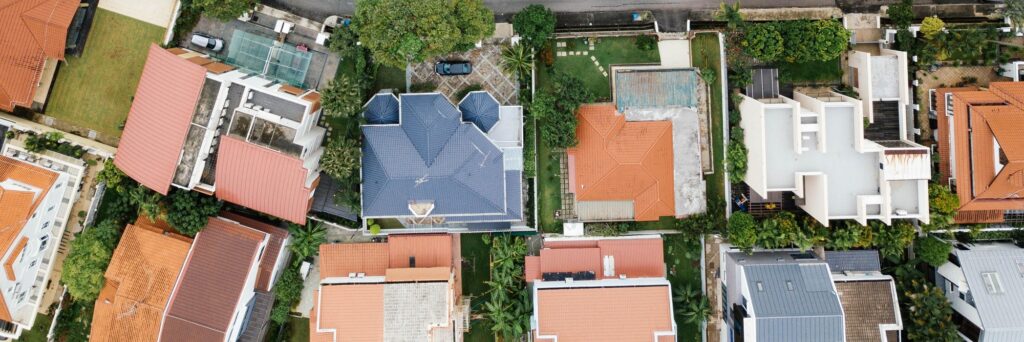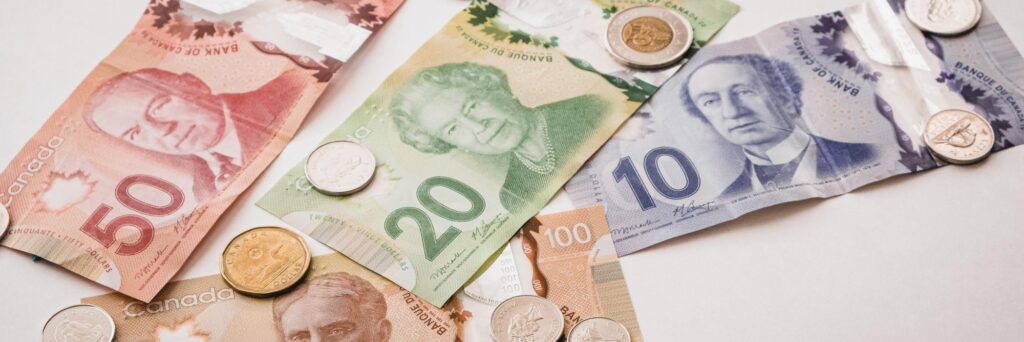Here’s everything you should know about the new FHSA
Huge news for potential homeowners this month as the government has just launched a brand new type of savings account, the FHSA or Tax-Free First Home Savings Account (it really rolls off the tongue doesn’t it). In this article we’re going to explain what the FHSA is and why it’s so great.
Key Takeaways
- The FHSA is a new account you can open to help save for your first home
- The maximum contribution amount to the FHSA is $8,000 per year up to $40,000
- The qualifications to open an account are less strict than you might imagine
What is the FHSA (First Home Savings Account)?
The FHSA is basically a TFSA (Tax-Free Savings Account) and an RRSP (Registered Retirement Savings Plan) combined into one, with the benefits of both which is why many people are excited about it. You can contribute up to $8,000 annually, up to a maximum of $40,000, which will take you 5 years if you contribute your maximum amount each year.
The account can be opened for a maximum of 15 years at which point you will have to have withdrawn the money, which we’ll get into later in this article.
The best part about the FHSA is that it’s not only tax-free like the TFSA for contributions, but also the contributions can be deducted from your income, similar to an RRSP and reducing your income taxes for the year.
The purpose of this account is as the name implies: to help Canadians save up to buy their first home. If you’re on our site, chances are you are either a current homeowner (in which case, sorry you won’t be able to take advantage of this) or an aspiring one, meaning you’re the prime user of the Tax-Free First Home Savings Account.
Who can open an FHSA?
As the name would imply, the First Home Savings Account is intended to help first-time homeowners save up for their first down payment. However, the rules for creating the account are not as strict as one might imagine.
According to the CRA the qualification for being able to open an FHSA are as follows:
1) You must be at least 18 years old and a resident of Canada
And
2) “you did not, at any time in the current calendar year before the account is opened or at any time in the preceding four calendar years, live in a qualifying home (or what would be a qualifying home if located in Canada) as your principal place of residence that you owned or jointly owned or your spouse or common-law partner (at the time the account is opened) owned or jointly owned”
Explained in clearer english: Anyone who didn’t live in a home they or their spouse owned in the last four years is eligible to open and contribute to an FHSA.
Key to note is that no mention is made for ownership of a property that you didn’t live in, meaning owning a rental property like a condo that you haven’t lived in within the last four years will not make you ineligible.

What are the benefits of opening an FHSA?
Ultimately there’s very little downside to using this account if you qualify. If you’re planning to buy a home in the next 15 years, it’s likely that you should prioritize saving in this account before a TFSA or an RRSP.
Generally in Canada, for investors, it’s recommended that you first max out your TFSA followed by your RRSP. It could be argued now that you should contribute to the FHSA first before your TFSA or your RRSP provided you’re planning on buying a home in the next 15 years, because you will be reaping the benefits of both.
What happens if you don’t use the money in your FHSA to buy a home?
As is stated by the CRA, the money contributed to the FHSA is intended to be used to purchase your primary residence and can be withdrawn tax free at any time to do so provided you submit the relevant tax forms. You must also intend to occupy the home within one year of its purchase.
Now, here’s what happens if you don’t end up buying a home with your First Home Savings Account: If, within 15 years, you don’t spend the money to purchase a home, you will need to transfer over the property in the account to your RRSP. The good thing about this is that you will pay no penalties for doing so, and won’t suffer any reductions in contribution room to your RRSP. The additional contribution room, according to the amount you have in your FHSA account, is simply added on top to your current RRSP amount. This means there is very little downside to contributing to an FHSA, even if you end up not purchasing a home within the next 15 years.
Will a First Home Savings Account help me afford a home?
The most common complaint that we’ve seen among people online is that a first home savings account will make only a small dent in the massive down payments that are sometimes required in the current housing market. While it’s true that even with the most optimistic assumptions, a savings account alone may not be enough to afford a home in some major cities, it’s important to remember that every little bit counts when it comes to saving for a down payment.
Assuming a 10% return on a $40,000 investment, you could potentially double your investment amount within 7 years, bringing it to $80,000. While this amount may not be enough to afford a down payment in certain high-priced areas, it can still go a long way in helping you achieve your goal of homeownership.

The history of tax-advantaged accounts in Canada.
The FHSA is now one of a number of tax-advantaged investing accounts that Canadians have access to.
First of all, there’s the TFSA or Tax-Free Savings Account. This account was made to help all Canadians, including low-income individuals, save and invest their money. The TFSA is completely tax-free, which means that any contributions and investment gains are not subject to income or capital gains tax.
The RRSP or Registered Retirement Savings Plan is another popular tax-advantaged account in Canada. The main benefit of the RRSP is that contributions are income tax deductible. This means that any money you contribute to your RRSP gets deducted from your taxable income, reducing the amount of tax you will have to pay for that year. However, when it comes time to withdraw money from your RRSP (which you must do at a certain age) you will need to pay income tax on the money withdrawn. It’s generally a good idea to contribute to your RRSP when your current income is expected to be higher than when you retire. This is the case for the vast majority of Canadians, as employment income is typically higher than the amount withdrawn from retirement portfolios in retirement.
Let’s imagine a scenario where you’re currently making $100,000 and are in a marginal tax bracket of 37.91%. You will be better off contributing to your RRSP now and deducting that from your income. Then, when you turn 65 and start withdrawing from your RRSP, you will only be paying taxes on the amount you withdraw. Let’s assume that you only withdraw $50,000 per year. You’ll likely be in a much lower marginal tax bracket, and as such, you’ll be better off.
It’s important to note that this also doesn’t take into account the time value of money. The time value of money states that money earned earlier is more valuable as it has more time to compound if you invest it wisely. So, it’s always a good idea to start saving and investing as early as possible to take advantage of compound interest and maximize your savings. While your marginal tax bracket might not be high right now, saving more money now to invest from a tax refund might still leave you better off despite having a higher tax rate later on.
Overall thoughts on the FHSA
In conclusion, a First Home Savings Account can be a great tool to help you save for a down payment on your first home. Other tax-advantaged accounts like the TFSA and RRSP can also help you maximize your savings and reduce your tax burden, but if you are planning to buy your principal residence within the next 15 years you should prioritize contributing to an FHSA. Remember, every little bit counts when it comes to saving for your dream home, so start saving and investing today!
For all your homeownership needs and the best mortgage rates on the market, sign-up to Perch today.
See today’s best mortgage rates in one click







